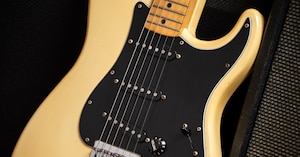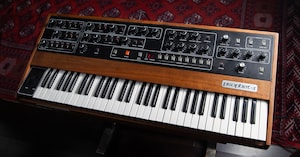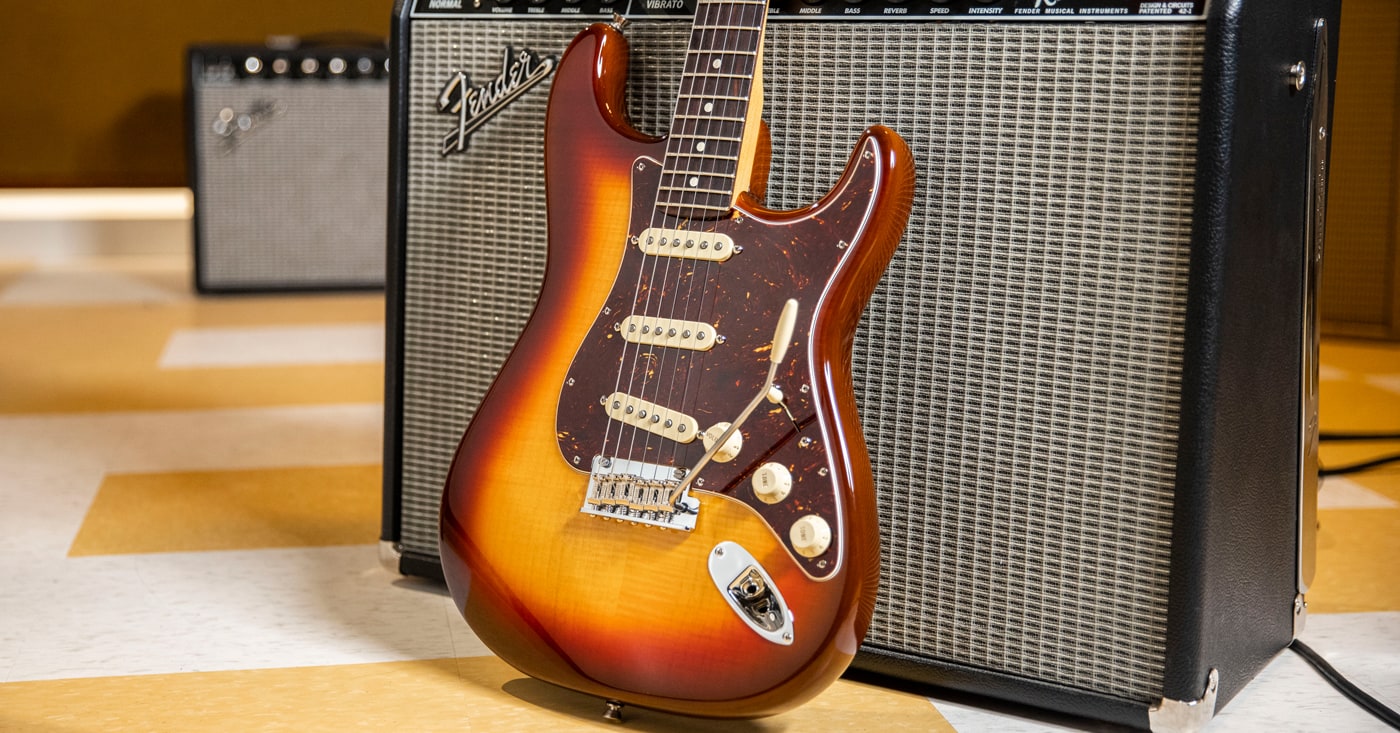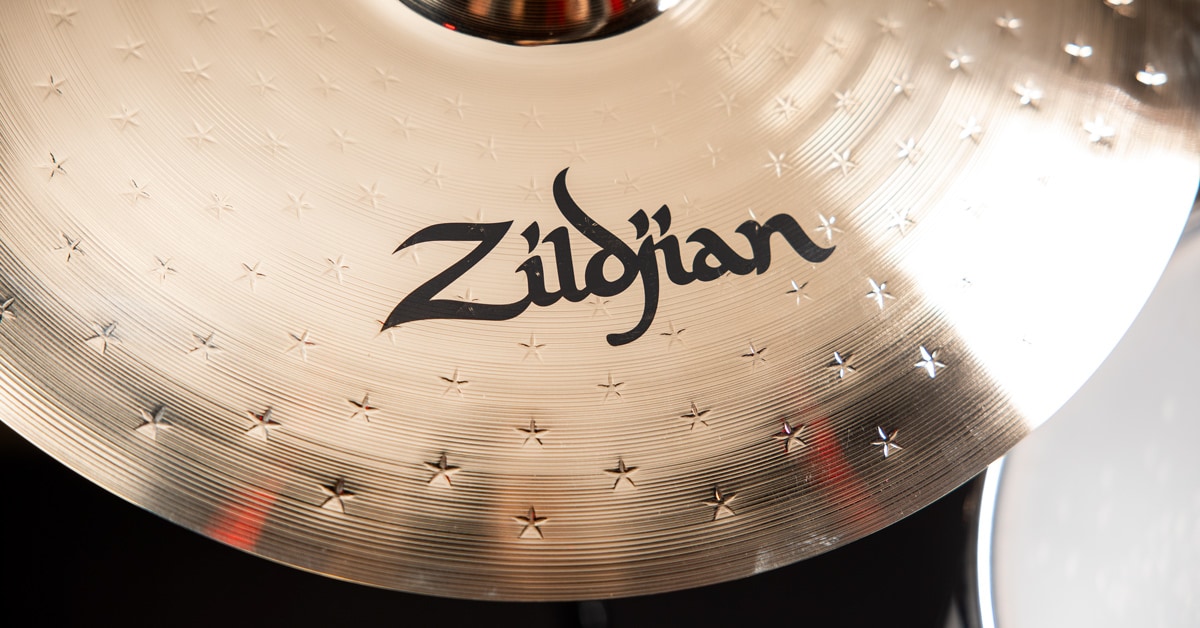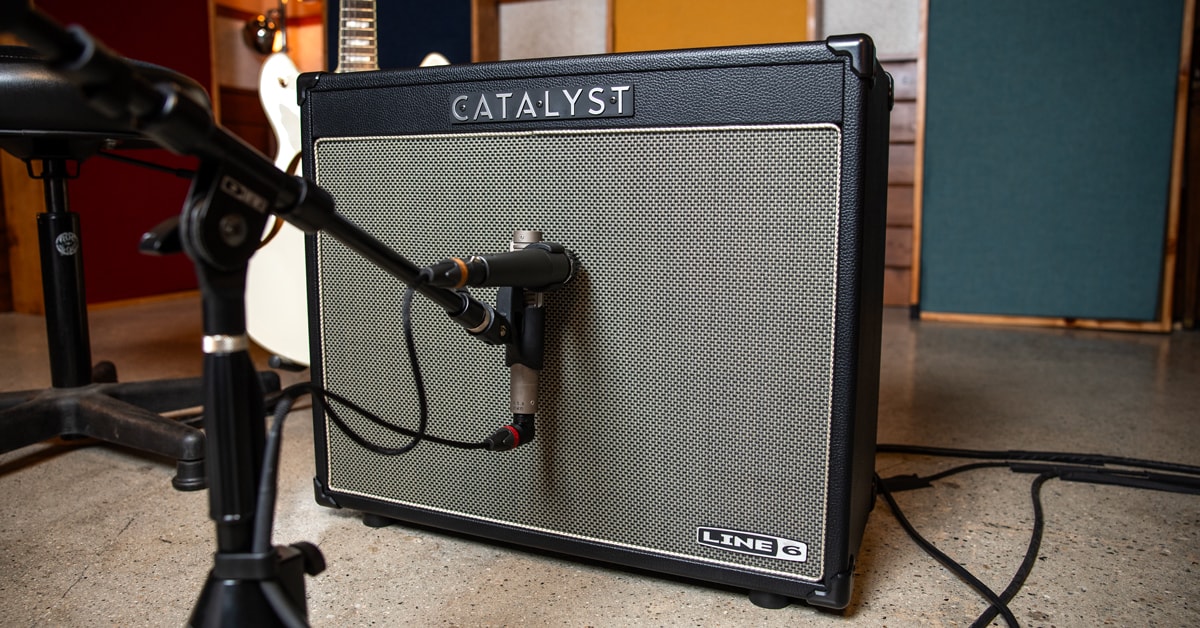Line 6 is dismissing the “none more black” look of its Catalyst amps and unveiling a style update for the new Catalyst CX lineup. However, as impressive as the revamped grille cloth and piping appear, this is Line 6, so a more high-end, classic-era fashion statement isn’t the only upgrade the Catalyst CX received.
The innovative music tech company also provided six additional Helix amp models, the ability to use two effects at a time, and other user interface and firmware enhancements. The Line 6 Catalyst CX 60 1x12, CX 100 1x12 and CX 200 2x12 combos bring even more tonal options to a value-packed amplifier, and, yes, they do look fabulous. Even hipper, in a benevolent example of technical adaptability, original Catalyst users will not be denied the benefits of the renovated CX series amps.
“When Catalyst CX launches, anyone who has an original V1 Catalyst can download the new firmware, and they'll have all of the same functionality as the CX amps,” says Line 6 Director of Product Management Rick Gagliano. "So, although they won't have the fancy new grille cloth and piping—or the new control panel callouts for the new effects features—they will be able to have the 12 amps, new effect approach and upgrades from the CX series."
As there’s a lot more to dive into, please read on as Gagliano goes deeper into the ethos of the brand-new Catalyst CX series amps.
Is there anything significantly different under the hood in Catalyst CX, as far as processing power?
Rick Gagliano: Electrically and mechanically, Catalyst and Catalyst CX are virtually the same. For Catalyst CX, it's all about new DSP, new firmware and the cosmetic changes.
What typically drives the thinking when you’re seeking to revamp the look of an amplifier?
There is a uniformity in the black-on-black-on-black amps in the market—especially at the under $500 price point. We thought, “Is there a way we could incorporate some of the visual goodness we see on some higher-end amplifiers into Catalyst CX?” We wanted to set the new amps apart from other options available in their price range. We actually looked through our history books at Line 6 for inspiration. For example, anyone familiar with our earlier Line 6 amplifiers will notice that Catalyst CX is a tip of the hat to our Flextone series. That’s kind of where we landed.
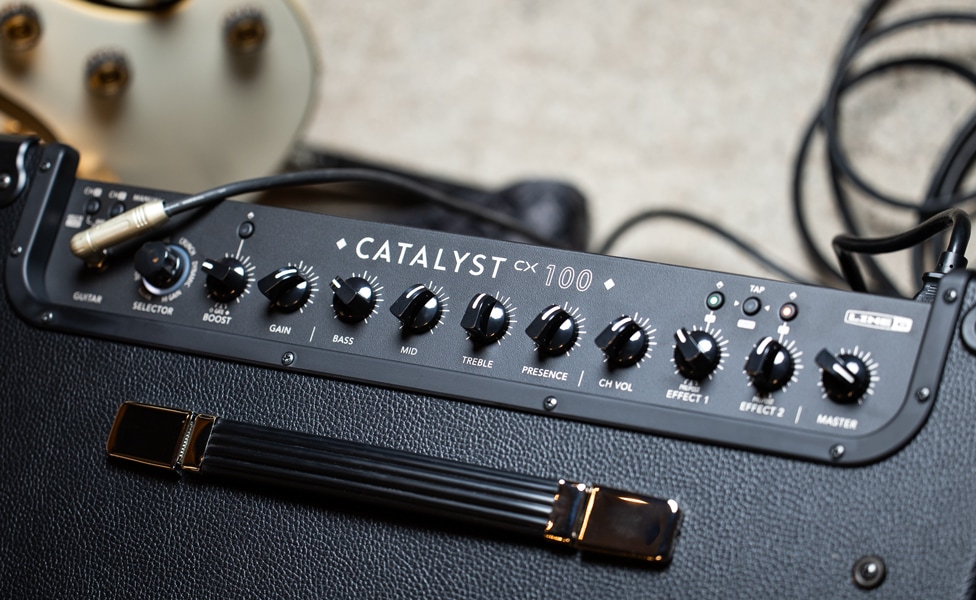
But how is it decided what color grille cloth to use, and whether gold or white piping will offset a tweed-style look better to ultimately conjure up a more high-end visual vibe?
It's funny you mention that. We have an internal industrial design team. We also sought input from our sales staff, our engineers and Chief Product Architect Eric Klein, as well as me and the rest of the product team.
Obviously, you could spend months debating what the appropriate look should be, but I’m taking an educated guess that we went through six or seven rounds of, “What about this? What about that?” For the grille cloth it was not just about the look. We considered the thickness and acoustic properties of the material. Then, it was deciding if it had the right amount of dark color and contrast.
After we settled on a grille cloth, we looked at several different types of piping to determine which would provide the best visual appeal. We looked at stark white piping, as well as some greys and blacks. We looked at a bunch of different things.
Furthermore, we were aware that one of the challenges in that under $500 price point is appealing to beginning players who are somewhat new to the instrument. These players may not have preconceived notions of brand names and models, but they know what they've seen—whether it's in a music video, or on a club or concert stage. So, we thought it would be important to have a classic look that echoes some of the amps we've all grown up with over the years.
The cosmetic design process was not easy, and it’s something all amp companies deal with constantly. It’s a question of, “How do we tip our hat to our history without alienating new players and customers?” It's challenging. Now, there’s a nod to the past, but it’s cyclical. We did a lot of back-and-forth, and there was no shortage of opinions.
Another update to Catalyst CX is six additional amps. How did the team determine that adding amp models would be both desired and beneficial to users, and how were those amps chosen?
You’ve hit on a key thing. When we first launched Catalyst, we talked about original amp designs, and that resonated with a fair amount of customers. However, there are certain guitar players who need to have an idea of what they're going to hear. So, we thought, “What if we were to look at some of the most popular models that exist in Helix?”
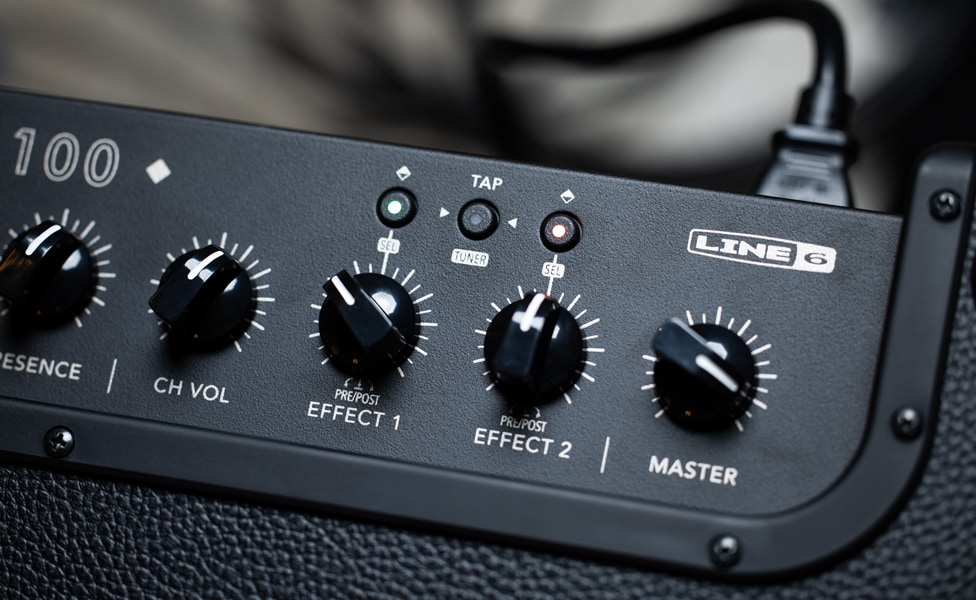
We pulled data from a number of internal surveys, reviewed Helix user groups and studied a few years of Helix update data that revealed the amp models that resonated with different kinds of players. Then, we looked for popular Helix amps that would work with the six style options offered for Catalyst—Clean, Boutique, Chime, Crunch, Dynamic and Hi Gain. The idea was to compare and contrast well-known Helix models to the original amp designs already present and ensure the new amp sounds were unique enough to be a value-add to the player.
In other words, Catalyst CX has two amp options for each style—an original, “X the Unknown” sound, and an already established and recognized Helix tone?
Yes. Exactly.
Which Helix amps won the lottery for inclusion on Catalyst CX?
For the Clean style, we choose Archetype Clean—which is wildly popular in the world of Helix and HX, and is inspired by a bunch of classic clean amps. The Boutique amp we added is the Grammatico GSG-100 that I believe landed in the Helix 3.5 update. There was lots of online chatter about that amp. It's a tip of the hat to a very well-known overdrive amp that has been a studio classic for years, but with amp builder John Grammatico's unique spin. We had to optimize that one for Catalyst CX, because Helix allows super deep editing, but we wanted a simpler user interface for Catalyst. We made some choices about whether the jazz rock switch would be activated and so on.
For the additional Chime amplifier, we chose Elmsley—another one of our original amp designs—which was also part of the 3.5 Helix update. There were a lot of kind of flags raised from the Helix community about that one. It's a strange amp to define, but it's a great-sounding amplifier—it has an interesting low end and a unique high-end sparkle. Crunch received the 2204 Mod, which is a modified version of a popular British amp with extra gain stages. The Dynamic style got Ventoux—a combination of American and British voicings with an interesting bump in the midrange. It’s a very popular original amp design from an earlier Helix update.
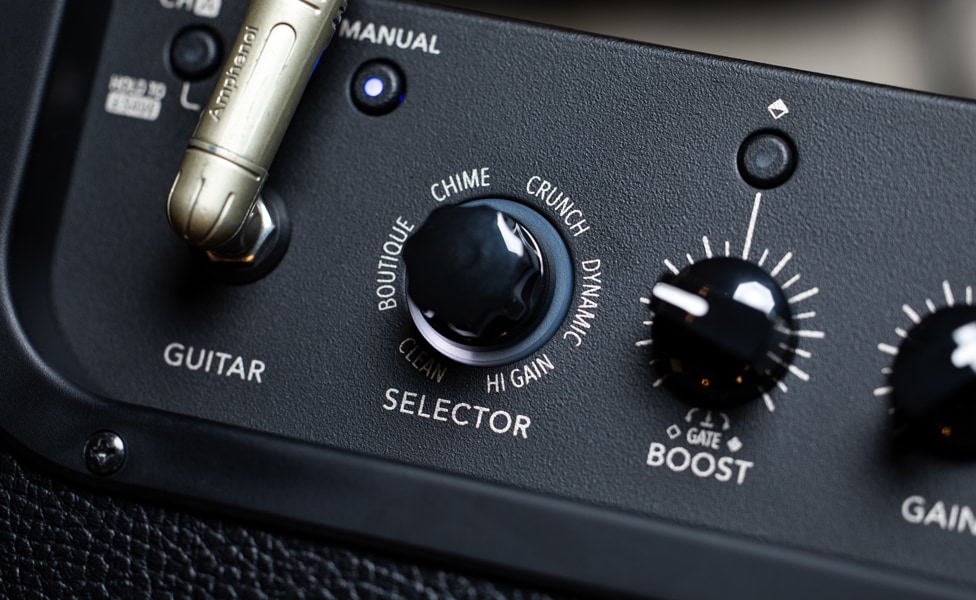
Finally, we added Badonk for Hi Gain. That amp has all the gain in the world with a tight low end. It’s very different from the Oblivion model included in the original Catalyst, which is a contemporary high-gain tone. Badonk is a little more classic in its approach.
Something we haven't hit yet is—just like the original Catalyst—each of the new amp models has a customized boost attached to it. The boost on some of them are models of actual, well-known boost pedals. In other instances, such as the GSG-100, the boost is the same as the one included in the amp. On the Elmsley amp, however, the boost has a negative feedback filter. As you turn it up, the feedback filter goes in the opposite direction. As a result, there are a number of colors available from that particular amplifier.
Now, when players got familiar with the original Catalyst, did they ask Line 6, “Hey, it would be great to have six more amps here?” Or was the decision to double the amp options more of an internal thing—like, “We’re a technology company. Should we offer more value? We can totally do that.”
Fair question. I think it's a little bit of both. When we launched the first version of Catalyst, we had a Helix update shortly thereafter. So, we did have some people saying, “I love the amps in Catalyst, but I’d also love to have…” fill in whatever their favorite Helix or HX model might have been. On the other side, once we knew there was desire from the market for additional voicings, we said, “We have a library full of them. Let's see if we can pick the right ones.” A list got started, and we saw that some models–such as Ventoux—kept showing up. We selected six, because that was the easiest number to implement from a user interface perspective. Six made the most sense.
Given that the sounds are in the same family, do you see any differences between the typical Helix user and players who will gravitate to Catalyst CX?
I think the Helix use case is very different from a conventional combo amp, because a lot of Helix users are going direct. They don’t have an amplifier behind them. However, what started to happen is that Helix users—and the Line 6 family in general—would weigh in and say something like, “If I had an amp with a couple of Helix voices onboard, I'd have something I could take to club gigs on weekends. Then, I could leave my Helix in my home studio, or save it for big shows.” So, there's some convergence there, but I still think they're different use cases.
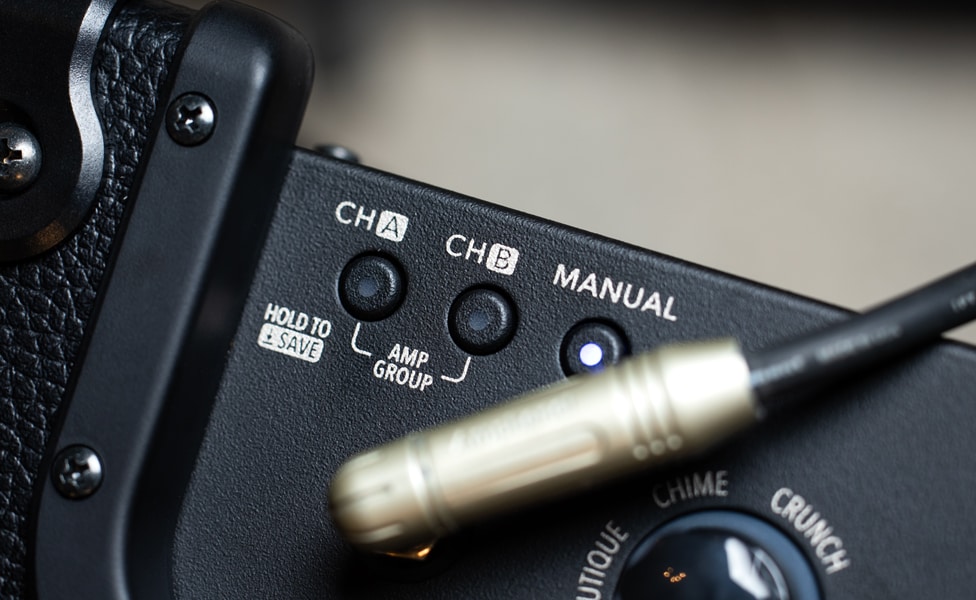
However, something else we picked up from chatter in the forums was that people liked the way the Catalyst speaker responded, and some of them choose to use the Catalyst more like a powered speaker. They’d run a Helix or HX Stomp into the Catalyst's Power Amp In feature and use those sounds instead of the onboard Catalyst models.
Are there any other notable firmware updates to Catalyst CX?
There were some “Easter eggs” in the original version that we decided to make more obvious in Catalyst CX. For example, you don’t have to use the editor to activate the noise gate. You simply hold down the Boost knob and switch it past the 12 o'clock position.
Also, in the original effects section, you had one knob for your effects and one knob for a dedicated reverb. Pretty quickly, we had requests from users such as, “What if I don’t want reverb, but I do want to be able to use two effects at a time?” The Catalyst CX now provides two effects slots, and you can choose any of the 24 available effects for either of them and assign them pre or post.
In addition, we optimized the amp models for Catalyst CX, as well as updated some of the default settings. When you load Badonk, for example, we provide a predefined starting point that portrays the amp’s tone with its best foot forward, so to speak. On the original Catalyst, the amp models started out flat. We also added some default settings to the effects. I should mention that the Catalyst Edit software editor is being updated to capture the new functionality and the new amps.
What about the back panel features? Some players tend to overlook those…
I think the effects loop is probably the biggest thing, because not many amps in that price point have one. On the 100- and 200-watt versions there's a MIDI connection so you can use a standalone MIDI controller for channel, preset and continuous controller messaging. The 60-watt model will do MIDI over USB.
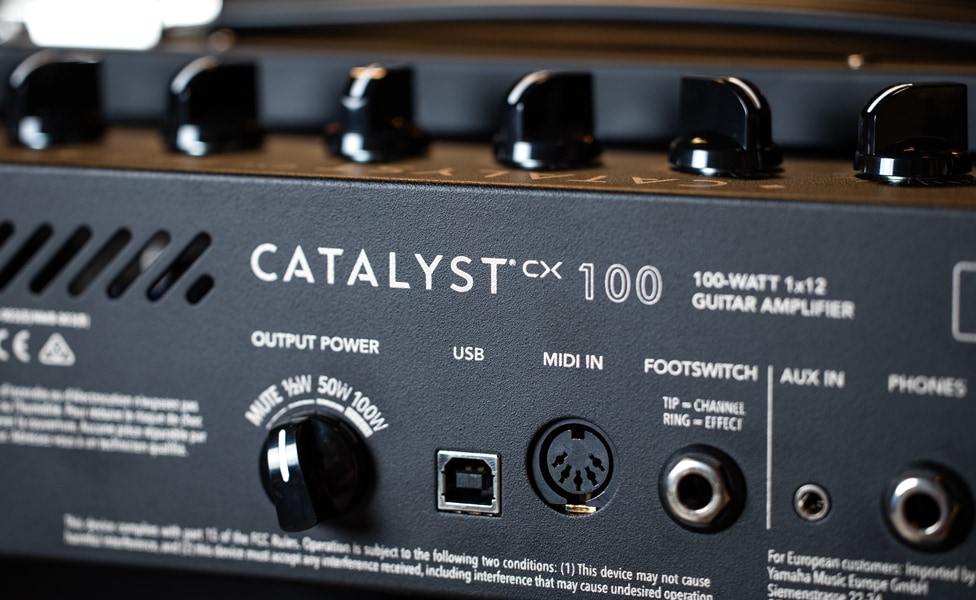
Have you ever considered taking a popular Helix model and creating a dedicated hardware amp around that one sound?
We’ve had conversations about making a certain amp a standalone product. While that's interesting and intriguing, it’s outside of the current brand promise of having multiple voices available to players. It doesn’t mean it couldn’t happen in the future, and it could be something we investigate further.
How do you think players might view—and consider—the new Catalyst CX amps?
We're hoping the new look will capture people that may have walked past the original Catalyst, because there was no shortage of amps that had the same appearance. Perhaps the revamped cosmetics will intrigue players enough to have them say, “Hey, what’s this?” We also hope the more front-and-center tie-in to Helix—given that Helix is a very well-known leader in the modeler and multi-effects space—is another benefit. Obviously, a $1,500 multi-effects processor may not appeal to the same customer that a $400 amplifier appeals to, but those players may look at Catalyst CX and say, “If I'm getting the sounds that are in Helix, why wouldn’t I want that in a combo amp?”


